Caryn’s Thoughts
 When we think of disasters at sea, Titanic is the first ship that most likely comes to mind, and while Titanic was a terrible tragedy, it was not the worst disaster at sea, by any means. It is amazing to me, however, that some of the others are never talked about at all, and in fact, you may have never heard about them. Titanic had a capacity of 3547 people, but was only carrying 2223 with passengers and crew. The loss of more than 1500 lives, was horrific to be sure, but it was not the worst disaster at sea in history. That distinction goes to The Wilhelm Gustloff.
When we think of disasters at sea, Titanic is the first ship that most likely comes to mind, and while Titanic was a terrible tragedy, it was not the worst disaster at sea, by any means. It is amazing to me, however, that some of the others are never talked about at all, and in fact, you may have never heard about them. Titanic had a capacity of 3547 people, but was only carrying 2223 with passengers and crew. The loss of more than 1500 lives, was horrific to be sure, but it was not the worst disaster at sea in history. That distinction goes to The Wilhelm Gustloff.
The Wilhelm Gustloff was built by the Blohm & Voss shipyards. It measured 684 feet 1 inch long by 77 feet 5 inches wide with a capacity of 25,484 gross register tons. The ship was launched on 5 May 1937. Originally the ship was intended to be named Adolf Hitler, but was named after Wilhelm Gustloff, a leader of the National Socialist Party’s Swiss branch, who had been assassinated by a Jewish medical student in 1936. Hitler decided on the name change after sitting next to Gustloff’s widow during his memorial service. I guess Hitler managed to do a few nice things in his horrid lifetime. The ship was the first purpose-built cruise liner for the German Labour Front or Deutsche Arbeitsfront, 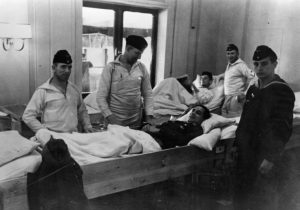 DAF and used by subsidiary organization Kraft durch Freude, KdF meaning Strength Through Joy. The purpose of the ship was to provide recreational and cultural activities for German functionaries and workers, including concerts, cruises, and other holiday trips, and as a public relations tool, to present “a more acceptable image of the Third Reich.” She was the flagship of the KdF cruise fleet, her last civilian role, until the spring of 1939.
DAF and used by subsidiary organization Kraft durch Freude, KdF meaning Strength Through Joy. The purpose of the ship was to provide recreational and cultural activities for German functionaries and workers, including concerts, cruises, and other holiday trips, and as a public relations tool, to present “a more acceptable image of the Third Reich.” She was the flagship of the KdF cruise fleet, her last civilian role, until the spring of 1939.
The Wilhelm Gustloff became a German hospital ship from September 1939 to November 1940, with its official designation being Lazarettschiff. Then, beginning on 20 November 1940, the medical equipment was removed from the ship and she was repainted from the hospital ship colors of white with a green stripe to standard naval grey. As a consequence of the British blockade of the German coastline, she was used as a barracks ship for approximately 1,000 U-boat trainees of the 2nd Submarine Training Division in the port of Gdynia, which had been occupied by Germany and renamed Gotenhafen. The ship was based near Danzig. Then, as things started to go from bad to worse during World War II, the Germans decided that they needed to evacuate as many people as possible from Courland, East Prussia and Danzig, West Prussia. On  January 30, 1945 during Operation Hannibal, which was the naval evacuation of German troops and civilians from Courland, East Prussia, and Danzig, West Prussia as the Soviet Army advanced. The Wilhelm Gustloff’s final voyage was to evacuate German refugees and military personnel as well as technicians who worked at advanced weapon bases in the Baltic from Gdynia, then known to the Germans as Gotenhafen, to Kiel. The ship’s capacity was 1465, but because they were evacuating people, about 9,400 people were onboard. The ship was hit by a torpedo from Soviet submarine S-13 in the Baltic Sea. It quickly sank, taking all 9,400 people with it. The loss of the Wilhelm Gustloff remains the worst disaster at sea in history.
January 30, 1945 during Operation Hannibal, which was the naval evacuation of German troops and civilians from Courland, East Prussia, and Danzig, West Prussia as the Soviet Army advanced. The Wilhelm Gustloff’s final voyage was to evacuate German refugees and military personnel as well as technicians who worked at advanced weapon bases in the Baltic from Gdynia, then known to the Germans as Gotenhafen, to Kiel. The ship’s capacity was 1465, but because they were evacuating people, about 9,400 people were onboard. The ship was hit by a torpedo from Soviet submarine S-13 in the Baltic Sea. It quickly sank, taking all 9,400 people with it. The loss of the Wilhelm Gustloff remains the worst disaster at sea in history.
 It’s a tiny island in the middle of the vast Pacific Ocean, so what possible impact could a battle for control of Midway Island have had? The answer is…much more than you might think. Sometimes, it’s not about the size of the nation, but rather about the might of its army. Japan is a little nation, it had built a mighty army and it was systematically defeating the Allies. Although other battles would soon make Midway seem like a small battle, no naval battle of World War II…and few others, if any, in all of naval history…would have so many momentous consequences ascribed to it as this one battle. So complete was Japan’s defeat at Midway, and so stunned was the Imperial High Command, that it would keep the results of the battle a secret from the Japanese people for the rest of the World War II.
It’s a tiny island in the middle of the vast Pacific Ocean, so what possible impact could a battle for control of Midway Island have had? The answer is…much more than you might think. Sometimes, it’s not about the size of the nation, but rather about the might of its army. Japan is a little nation, it had built a mighty army and it was systematically defeating the Allies. Although other battles would soon make Midway seem like a small battle, no naval battle of World War II…and few others, if any, in all of naval history…would have so many momentous consequences ascribed to it as this one battle. So complete was Japan’s defeat at Midway, and so stunned was the Imperial High Command, that it would keep the results of the battle a secret from the Japanese people for the rest of the World War II.
The story of the battle has been told many times over the years, and Midway continues to hold an almost mysterious place in the collective memory of the United States Navy and the United States in general. However, in recent decades a new generation of scholars has studied the facts of the battle. In some ways they  have removed the mystery of how such a “miracle” victory came to be and in other ways they have chalked it up to chance, luck, and the weather. The Americans had heard something about an attack, but the Japanese used the code location as “AF” to keep the attack location secret. The Americans suspected that it was Midway, so they sent a radio message that the island’s desalinization plant had broken down. The radio message was broadcast without encryption to ensure that Japan could read it if it was intercepted. The radio message was duly intercepted by Japan and reported by a message encoded in JN25 stating that AF’s desalinization plant was out of order and was intercepted by Station HYPO. “AF” was thus confirmed as Midway.
have removed the mystery of how such a “miracle” victory came to be and in other ways they have chalked it up to chance, luck, and the weather. The Americans had heard something about an attack, but the Japanese used the code location as “AF” to keep the attack location secret. The Americans suspected that it was Midway, so they sent a radio message that the island’s desalinization plant had broken down. The radio message was broadcast without encryption to ensure that Japan could read it if it was intercepted. The radio message was duly intercepted by Japan and reported by a message encoded in JN25 stating that AF’s desalinization plant was out of order and was intercepted by Station HYPO. “AF” was thus confirmed as Midway.
That was the beginning of the end for Japan. The Americans began to prepare for the attack. American scholars of Midway have long tried to explain away the many coincidences by characterizing the result of the battle as little short of a “miracle.” Walter Lord would name his 1967 narrative of Midway Incredible Victory, and 15 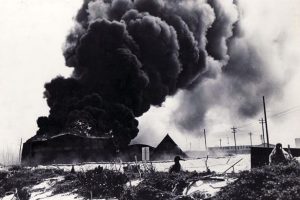 years later Gordon Prange’s posthumously published account of the battle was straightforwardly entitled Miracle at Midway. One battle participant’s memoir stated, “God was at Midway.” He saw divine intervention at work. The concept of the miracle has helped to explain the elements of the battle that have eluded detection, explication, or understanding. Some say that over the years, Midway has become less of a miracle, but that many mysteries remain. I say, that it was a miracle. God was at work at Midway. Even the weather worked against the Japanese when cloud cover prevented them from seeing what was right in front of them, and at the end of their attack…less than a week later, four Japanese fleet carriers would be twisted ruins on the bottom of the Pacific.
years later Gordon Prange’s posthumously published account of the battle was straightforwardly entitled Miracle at Midway. One battle participant’s memoir stated, “God was at Midway.” He saw divine intervention at work. The concept of the miracle has helped to explain the elements of the battle that have eluded detection, explication, or understanding. Some say that over the years, Midway has become less of a miracle, but that many mysteries remain. I say, that it was a miracle. God was at work at Midway. Even the weather worked against the Japanese when cloud cover prevented them from seeing what was right in front of them, and at the end of their attack…less than a week later, four Japanese fleet carriers would be twisted ruins on the bottom of the Pacific.
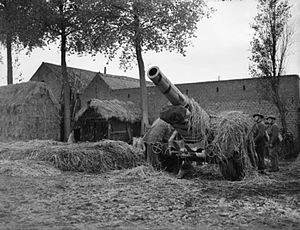 A declaration of war usually means that the people in both areas within the dispute had better prepare for eminent attack, because the declaration of war is like firing the warning shot before the actual open-fire begins. Of course, it may not be an immediate attack, but the attack always comes…or does it. On September 3, 1939, the United Kingdom and France declared war on Nazi Germany, after the Germans invaded Poland. Over the next eight months, at the start of World War II, there were no major military land operations on the Western Front. Strange, considering that the United Kingdom and France had declared war on Nazi Germany. You would think that they would attack or something, but nothing happened. During those eight months, Poland was overrun. It took about five weeks for the German Invasion of Poland beginning September 1, 1939 and the Soviet invasion beginning on 17 September 1939. Still, the Western Allies did nothing. I guess I don’t understand that. War had been declared by each side, but no Western power would
A declaration of war usually means that the people in both areas within the dispute had better prepare for eminent attack, because the declaration of war is like firing the warning shot before the actual open-fire begins. Of course, it may not be an immediate attack, but the attack always comes…or does it. On September 3, 1939, the United Kingdom and France declared war on Nazi Germany, after the Germans invaded Poland. Over the next eight months, at the start of World War II, there were no major military land operations on the Western Front. Strange, considering that the United Kingdom and France had declared war on Nazi Germany. You would think that they would attack or something, but nothing happened. During those eight months, Poland was overrun. It took about five weeks for the German Invasion of Poland beginning September 1, 1939 and the Soviet invasion beginning on 17 September 1939. Still, the Western Allies did nothing. I guess I don’t understand that. War had been declared by each side, but no Western power would 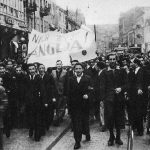 launch a significant land offensive…even though the terms of the Anglo-Polish and Franco-Polish military alliances obligated the United Kingdom and France to assist Poland. They simply stood by and let it happen.
launch a significant land offensive…even though the terms of the Anglo-Polish and Franco-Polish military alliances obligated the United Kingdom and France to assist Poland. They simply stood by and let it happen.
The quiet of the so-named Phoney War was marked by a few Allied actions. During the Saar Offensive in September, France attacked Germany with the intention of assisting Poland, but the attack fizzled out within days and the French withdrew. In November, the Soviets attacked Finland in the Winter War. This resulted in much debate in France and Britain about helping Finland, but this campaign was delayed until the Winter War ended in March. The Allied discussions about a Scandinavian campaign caused concern in Germany and resulted in the German invasion of Denmark and Norway in April. Then the Allied troops that were previously assembled for Finland were redirected to Norway instead. Fighting there continued until June when the Allies evacuated, ceding Norway to Germany in response to the German invasion of France, which had taken place on May 10, 1940.
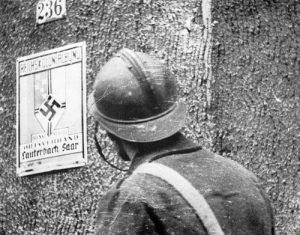
The Germans launched attacks at sea during the autumn and winter of 1939, against British aircraft carriers and destroyers, sinking several including the carrier HMS Courageous with the loss of 519 lives. Action in the air began on October 16, 1939 when the Luftwaffe launched air raids on British warships. There were various minor bombing raids and reconnaissance flights on both sides, but nothing that could possibly be viewed as a clear offensive….and during that whole time, people were dying and being subjected to various atrocities, because no one would help. Yes, war was declared, but it was a phony war, and apparently a phony declaration.

 My sister, Alena Stevens, is the refocus room coordinator and an educational support staff member at Verda James Elementary School here in Casper, Wyoming. The resource room is really where children are sent when they have a learning disability or in some way need a little bit of extra one-on-one time with an instructor. The student getting this type of support will receive some time in the resource room, which is referred to as a “removal from the regular education environment” portion of the day and some time in the regular classroom with modifications and/or accommodations which may include specialized instruction with their non-impaired peers. It isn’t a punishment, but rather a way to enhance their education, by allowing them to relax, outside of the view of their peers who do not struggle, and get the assistance they need to succeed. Besides helping children who have a special need, Alena is the playground supervisor, so she get to spend time with all the children in the school…and they all totally love her and want to stay friends with her all of their lives.
My sister, Alena Stevens, is the refocus room coordinator and an educational support staff member at Verda James Elementary School here in Casper, Wyoming. The resource room is really where children are sent when they have a learning disability or in some way need a little bit of extra one-on-one time with an instructor. The student getting this type of support will receive some time in the resource room, which is referred to as a “removal from the regular education environment” portion of the day and some time in the regular classroom with modifications and/or accommodations which may include specialized instruction with their non-impaired peers. It isn’t a punishment, but rather a way to enhance their education, by allowing them to relax, outside of the view of their peers who do not struggle, and get the assistance they need to succeed. Besides helping children who have a special need, Alena is the playground supervisor, so she get to spend time with all the children in the school…and they all totally love her and want to stay friends with her all of their lives.
It seems odd to me that I would have any specific knowledge of the on goings of the elementary schools, because my children are grown and so are my grandchildren, so how would I really know what is going on in the elementary schools? Well, in most cases, I wouldn’t, but because I have become friends over the years with some of the students who came in contact with my sister, and because our grand nephew, Ethan Hadlock and our grand niece Aurora Hadlock, go to the school too, I have seen what a wonderful, positive impact Alena has had on their lives. These kids remain friends with her, years after they leave elementary school, and the ones I know have become such wonderful people, and many of them say that Alena had a big part in that, because as we all know, when kids struggle in school, self esteem suffers, but with the help of wonderful people like Alena, there are a bunch of kids coming out of that struggle on the winning side of life, against all odds.

 Not everyone has the ability to look back on their life and see the positive impact they had on the lives of others. Many people even wonder if anyone will remember them very long after they are gone, but when an elementary student remembers a teacher when they are married and have children of their own, you know that teacher was a very special person. That is what I hear about my sister, Alena Stevens, and it makes me proud. Today is Alena’s birthday. Happy birthday Alena!! Have a great day!! We love you!!
Not everyone has the ability to look back on their life and see the positive impact they had on the lives of others. Many people even wonder if anyone will remember them very long after they are gone, but when an elementary student remembers a teacher when they are married and have children of their own, you know that teacher was a very special person. That is what I hear about my sister, Alena Stevens, and it makes me proud. Today is Alena’s birthday. Happy birthday Alena!! Have a great day!! We love you!!

 When my daughter, Amy Royce and her family moved out to the Pacific Northwest, it was initially to get away from the cold Wyoming winters, but it has been an amazing adventure for them in many ways. Amy always loved the rainforests and the beaches too, so the Pacific Northwest was the perfect location for her. In the two years since they moved to Washington, they have been hiking the amazing trails in the area, and of course, enjoying the sunsets by the water. Amy also had the opportunity to go to the Skagit Valley Tulip Festival, which is an awesome spring display of tulips…acres and acres of tulips. It is a beautiful sight. I got to see it years ago, when my sister lived in that area, but I look forward to seeing it again with Amy.
When my daughter, Amy Royce and her family moved out to the Pacific Northwest, it was initially to get away from the cold Wyoming winters, but it has been an amazing adventure for them in many ways. Amy always loved the rainforests and the beaches too, so the Pacific Northwest was the perfect location for her. In the two years since they moved to Washington, they have been hiking the amazing trails in the area, and of course, enjoying the sunsets by the water. Amy also had the opportunity to go to the Skagit Valley Tulip Festival, which is an awesome spring display of tulips…acres and acres of tulips. It is a beautiful sight. I got to see it years ago, when my sister lived in that area, but I look forward to seeing it again with Amy.
In the two years that Amy has lived in Washington, I have seen her creative side simply blossom. She has done 
 a few sessions at one of the places where you paint and have wine, and she liked it so much that her husband, Travis bought her a set of paints and an easel. Amy’s creative side just bubbled out of her. Every new painting is better than the last. I wish I had such talent. She and her sister Corrie Petersen, both seem to have inherited that talent…but they did not get it from me, hahaha!! Amy also loves to take pictures of the area she lives in, and posts them to her Facebook. They are beautiful, and since I love photography, I’ll take a little credit and say that she inherited that ability from me…whether it’s true or not. The pictures she takes while hiking are amazing, and the subject matter doesn’t hurt anything either. Still, the eye of the photographer is the main part of great photography.
a few sessions at one of the places where you paint and have wine, and she liked it so much that her husband, Travis bought her a set of paints and an easel. Amy’s creative side just bubbled out of her. Every new painting is better than the last. I wish I had such talent. She and her sister Corrie Petersen, both seem to have inherited that talent…but they did not get it from me, hahaha!! Amy also loves to take pictures of the area she lives in, and posts them to her Facebook. They are beautiful, and since I love photography, I’ll take a little credit and say that she inherited that ability from me…whether it’s true or not. The pictures she takes while hiking are amazing, and the subject matter doesn’t hurt anything either. Still, the eye of the photographer is the main part of great photography.
While we wish that she lived closer to us, we always look forward to the trips we take out to see her and her 
 family. Since we love to hike too, we went on a few of the trails while we were there the last time, but the next time we go, it will be in the summer, and we are going to have her take us to some of the places she went last month, because those places were stunning. It’s funny, because Amy was never so much the hiker. She usually went to the gym for her exercise, and suddenly she likes to get out in nature too. Something I find totally awesome. Today is Amy’s birthday. Happy birthday Amy!! Have a great day!! We love you!!
family. Since we love to hike too, we went on a few of the trails while we were there the last time, but the next time we go, it will be in the summer, and we are going to have her take us to some of the places she went last month, because those places were stunning. It’s funny, because Amy was never so much the hiker. She usually went to the gym for her exercise, and suddenly she likes to get out in nature too. Something I find totally awesome. Today is Amy’s birthday. Happy birthday Amy!! Have a great day!! We love you!!

 Very early yesterday morning, a little boy named Jaxx David Harman was keeping his parents up all night. That may not seem like a strange thing to the parents of little ones, but little Jaxx had a very good reason for keeping his parents up…it was going to be his birthday, and he was excited. It wasn’t his birthday yet, and no one knew for sure if his birthday would be May 29th or May 30th. It depended on just how much of a hurry Jaxx was in. As it turned out, Jaxx wasn’t in a big hurry, and by the time he made his entrance, it was 4:15am on May 30th. Let’s hope he doesn’t make a habit of being up so late.
Very early yesterday morning, a little boy named Jaxx David Harman was keeping his parents up all night. That may not seem like a strange thing to the parents of little ones, but little Jaxx had a very good reason for keeping his parents up…it was going to be his birthday, and he was excited. It wasn’t his birthday yet, and no one knew for sure if his birthday would be May 29th or May 30th. It depended on just how much of a hurry Jaxx was in. As it turned out, Jaxx wasn’t in a big hurry, and by the time he made his entrance, it was 4:15am on May 30th. Let’s hope he doesn’t make a habit of being up so late.


Jaxx is the youngest child of my grand nephew, Jake Harman and his wife, Melanie. They have two daughters, Alice and Izabella, both of whom are very excited to have a little brother. Alice, being the oldest understands all this better than Izabella, but Izabella is quite interested anyway. Oh, I know that as little Jaxx grows up, he will most likely torment his big sisters, as most little brothers…or brothers in general…do, but they will love him anyway, because he is their brother, and nobody gets to be mad at him but them!!
I’m sure little Jaxx didn’t mean to keep his parents up all night, but I seriously doubt if it will be the last time. I 
 hope that starting out this way is not indicative of how Jaxx will be in the future, because as we all know, parents need their sleep too, especially parents of little ones. But then again, I would much rather have a baby keeping me awake than a child out on a date, and running late for curfew. I’m sure Jake and Melanie don’t even want me to think about those days yet, but as we all know, time flies quickly by, and those days will be here before they know it. Until then, Jake and Melanie, enjoy that sweet little boy. He is so precious and we are all very happy for you. Congratulations!!
hope that starting out this way is not indicative of how Jaxx will be in the future, because as we all know, parents need their sleep too, especially parents of little ones. But then again, I would much rather have a baby keeping me awake than a child out on a date, and running late for curfew. I’m sure Jake and Melanie don’t even want me to think about those days yet, but as we all know, time flies quickly by, and those days will be here before they know it. Until then, Jake and Melanie, enjoy that sweet little boy. He is so precious and we are all very happy for you. Congratulations!!

 May 30, 2002 dawned, a typically warm New York City day, but this was not a typical day at all. It had been a long, emotionally grueling 8 months and 19 days of cleanup after the September 11, 2001 attacks on the World Trade Center, the Pentagon, and the crash site in Shanksville, Pennsylvania. The majority of the lost were in the World Trade Center in New York City. Those 8 months and 19 days were filled with every possible emotion there could be…from joy when one was found alive, to grief over the lost, to anger at the attack, to hate for the Muslim attackers, to love for the survivors and the families of the lost. It was something that we all knew that we could never really wrap our heads around, and something that we knew we would never forget. It was a senseless attack that proved only that the attackers were insane and filled with hate for Americans and Christians. It was a time when America came together as one, and donated time, money, letters, and love to each other, because we were all victims of this attack, after all.
May 30, 2002 dawned, a typically warm New York City day, but this was not a typical day at all. It had been a long, emotionally grueling 8 months and 19 days of cleanup after the September 11, 2001 attacks on the World Trade Center, the Pentagon, and the crash site in Shanksville, Pennsylvania. The majority of the lost were in the World Trade Center in New York City. Those 8 months and 19 days were filled with every possible emotion there could be…from joy when one was found alive, to grief over the lost, to anger at the attack, to hate for the Muslim attackers, to love for the survivors and the families of the lost. It was something that we all knew that we could never really wrap our heads around, and something that we knew we would never forget. It was a senseless attack that proved only that the attackers were insane and filled with hate for Americans and Christians. It was a time when America came together as one, and donated time, money, letters, and love to each other, because we were all victims of this attack, after all.
On May 29, 2002, the last beam was removed from the site…marking the end of the cleanup effort that had been expected to last a year. There were many disappointments in the cleanup, because there were very few people pulled out alive after that first day, and in fact, the last survivor was pulled out 27 hours after the attack. There would be no more lives saved. People were lined up to donate blood in the hope that someone’s life could be saved, but the sad reality was that very few whole bodies were even pulled from the rubble. Most were bits and pieces, body parts, and even just fragments of bone or teeth. Authorities put the final death toll from the World Trade Center’s destruction at 2,823. Of those 2823 people, only 1,102 victims have been identified, and only 289 intact bodies were recovered.
The ceremony…if it could really be called that, because ceremony usually means a happy event…began in silence. There would be no speeches. Thousands of people stood silently in one place…Ground Zero, and no one spoke…no one spoke!! The ceremony began with the sound of a fire bell ringing for the fallen firefighters at 10:29 am ET, the same time the World Trade Center’s north tower collapsed on September 11, 2001. Thousands of people stood in silence, some with tears streaming from their eyes, as an honor guard made up of police, firefighters, and representatives of other agencies walked slowly up a ramp from the site carrying a stretcher bearing only an American flag. The flag, symbolizing the victims who were killed on September 11, but never found, was placed into a waiting ambulance. It was followed by a flatbed truck carrying the last 50 ton steel column from the site of the Trade Center ruins. The beam was part of the southeast corner of the south tower. It was hoisted onto a flatbed truck and shrouded in black cloth after its removal on May 29, 2002. Ten minutes into the ceremony, a pair of buglers…one from New York’s Police Department, the other from the New York Fire Department…played “Taps,” followed by a flyover of NYPD helicopters. Among the dead following the horrific attack, were 343 New York firefighters and an estimated 70 police officers from various departments, including 37 from New York’s Port Authority and 23 from the New York Police Department. Fewer than half of the firefighters who died were recovered. Five of them were from the Chelsea Firehouse, Engine 3 and Ladder 12. At the fire stations and police stations in New York City, dozens of family and friends watched the tribute on television. Hundreds of workers had labored around the clock since September 11 to recover the 
 bodies of those who died in the attack and to remove the 1.6 million tons of steel and concrete left behind. The debris was moved to a Staten Island landfill, but reminders of the attack remain in the area. “It’s over, but it will never be forgotten,” said FDNY Battalion Commander Richard Picciotto, who was in the north tower when it was hit. He was right. Today marks the 15th anniversary of that ceremony, and we have not forgotten.
bodies of those who died in the attack and to remove the 1.6 million tons of steel and concrete left behind. The debris was moved to a Staten Island landfill, but reminders of the attack remain in the area. “It’s over, but it will never be forgotten,” said FDNY Battalion Commander Richard Picciotto, who was in the north tower when it was hit. He was right. Today marks the 15th anniversary of that ceremony, and we have not forgotten.
 Memorial Day…the day we set aside to remember the heroes of our wars, who paid the ultimate price for the freedoms we hold dear. The men and women who were killed in the attack on Pearl Harbor come to mind, as do those lost on the beaches of Normandy, but there are so many others. From the fliers, to the foot soldiers, to the sailors…men and women, from the Revolutionary War, to the War on Terror, have set aside their goals in life, left their families at home, pushed back their fears, and done their duty to serve their country, and for so many of them, it was a one way ticket over there. They fought and died so that someone they didn’t know could be free and have the rights that so many take for granted. They looked away when they were protested, but deep down they wondered why people didn’t understand. They tried not to watch the news of death and destruction. They just did their job, until they lost their lives in a war they wished had never started.
Memorial Day…the day we set aside to remember the heroes of our wars, who paid the ultimate price for the freedoms we hold dear. The men and women who were killed in the attack on Pearl Harbor come to mind, as do those lost on the beaches of Normandy, but there are so many others. From the fliers, to the foot soldiers, to the sailors…men and women, from the Revolutionary War, to the War on Terror, have set aside their goals in life, left their families at home, pushed back their fears, and done their duty to serve their country, and for so many of them, it was a one way ticket over there. They fought and died so that someone they didn’t know could be free and have the rights that so many take for granted. They looked away when they were protested, but deep down they wondered why people didn’t understand. They tried not to watch the news of death and destruction. They just did their job, until they lost their lives in a war they wished had never started.
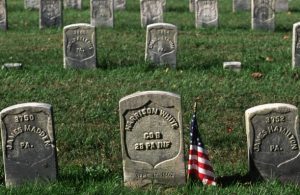 Most of us knew very few soldiers who lost their lives in defense of their country, and some of us may not have known any at all, even though some of our ancestors might have been casualties of a war. I think that sometimes the families of the lost feel alone in their grief. Unless someone has been in that position, they have a difficult time really understanding the depth of the loss. People try to be understanding, imagining how they would feel if it was them, but the reality is that our imaginations are not that good. Those who have lost a loved one to war can never forget the loss or the grief they feel. Grief has no timetable, and some pain just never goes away. No pain is more horrible than losing your child, and losing them in war, seriously compounds that pain.
Most of us knew very few soldiers who lost their lives in defense of their country, and some of us may not have known any at all, even though some of our ancestors might have been casualties of a war. I think that sometimes the families of the lost feel alone in their grief. Unless someone has been in that position, they have a difficult time really understanding the depth of the loss. People try to be understanding, imagining how they would feel if it was them, but the reality is that our imaginations are not that good. Those who have lost a loved one to war can never forget the loss or the grief they feel. Grief has no timetable, and some pain just never goes away. No pain is more horrible than losing your child, and losing them in war, seriously compounds that pain.
Memorial Day, or Decoration Day as it was first called, started three years after the Civil War ended, on May 5,  1868. It was established by the head of an organization of Union veterans…the Grand Army of the Republic. Decoration Day was a time for the nation to decorate the graves of the war dead with flowers. Major General John A Logan declared that Decoration Day should be observed on May 30. It is believed that date was chosen because flowers would be in bloom all over the country. The first large observance was held that year at Arlington National Cemetery, across the Potomac River from Washington, DC. It was a day for all citizens to remember the sacrifice of the brave fallen heroes. And to let the families know that their fallen soldier would ever be forgotten. In honor of all the fallen, may you rest in peace. Thank you for your great sacrifice. Your nation is grateful.
1868. It was established by the head of an organization of Union veterans…the Grand Army of the Republic. Decoration Day was a time for the nation to decorate the graves of the war dead with flowers. Major General John A Logan declared that Decoration Day should be observed on May 30. It is believed that date was chosen because flowers would be in bloom all over the country. The first large observance was held that year at Arlington National Cemetery, across the Potomac River from Washington, DC. It was a day for all citizens to remember the sacrifice of the brave fallen heroes. And to let the families know that their fallen soldier would ever be forgotten. In honor of all the fallen, may you rest in peace. Thank you for your great sacrifice. Your nation is grateful.

 Seven days might seem like enough time when your kids come home for a visit, but when it comes time for them to leave, you find that it is definitely not enough time. Of course, deep down, you knew it wouldn’t be, you just hoped that you could cram everything you wanted to say and do into the short amount of time you had. Then, almost before the visit started, it’s time to say goodbye again. That’s how my Casper family feels every time our Washington family comes for a visit, and I’m sure that’s how they feel whenever we go to visit there too. Included in the visit is always a certain amount stress and pressure, both for them and for us, because they are trying to make time for their family…and their friends, and we are trying to spend as much time as possible with them. No one wants to share them exactly…selfish, I know, but when they are your babies, you tend to get a little bit selfish.
Seven days might seem like enough time when your kids come home for a visit, but when it comes time for them to leave, you find that it is definitely not enough time. Of course, deep down, you knew it wouldn’t be, you just hoped that you could cram everything you wanted to say and do into the short amount of time you had. Then, almost before the visit started, it’s time to say goodbye again. That’s how my Casper family feels every time our Washington family comes for a visit, and I’m sure that’s how they feel whenever we go to visit there too. Included in the visit is always a certain amount stress and pressure, both for them and for us, because they are trying to make time for their family…and their friends, and we are trying to spend as much time as possible with them. No one wants to share them exactly…selfish, I know, but when they are your babies, you tend to get a little bit selfish.
This trip home for my daughter, Amy Royce and her kids, Shai and Caalab, was to attend the graduation of my youngest grandson, Josh Petersen. The trip was wonderful, as we attended his graduation party, awards ceremony, and of 
 course, the graduation. We went out to eat, and just sat around and talked, and we even had an early birthday party for Amy. We laughed, talked, and when I was given Friday off, we even did pedicures. The kids hooked up with all their friends, and for the most part, decided that sleep was an unnecessary vice best left to old people…and apparently mornings fell into that same category. Still, they all did their best to divide their time with family and friends as fairly as possible. Nevertheless, to my “mother’s heart” it was not enough time. I found myself wishing that I could turn back time to the first day of their arrival…over and over again.
course, the graduation. We went out to eat, and just sat around and talked, and we even had an early birthday party for Amy. We laughed, talked, and when I was given Friday off, we even did pedicures. The kids hooked up with all their friends, and for the most part, decided that sleep was an unnecessary vice best left to old people…and apparently mornings fell into that same category. Still, they all did their best to divide their time with family and friends as fairly as possible. Nevertheless, to my “mother’s heart” it was not enough time. I found myself wishing that I could turn back time to the first day of their arrival…over and over again.
Try as I might, before we knew it, the last day arrived. Amy had planned a friends night to get all her friends together at once, and it went very well. I made the bold move to “horn in” on the action, even though it was supposed to be for her friends, and they graciously accepted my intrusion. My only regret was that I should have “horned in” my other daughter, Corrie and her husband, Kevin, who I thought were spending the day with their son, Josh, who went back to Bellingham with Amy, Shai, and Caalab this morning to spend his Senior 
 Trip with them. I suppose I should have realized that Josh would be attending the graduation parties of his friends, but I wasn’t thinking very clearly, because the kids were leaving and I was dreading the tearful goodbyes I knew were inevitable. Hindsight is 20/20. As I contemplate the visit that we had, mixed with the sad goodbyes, a thought came to me…”Goodbyes are always hard, but I’m very thankful that we can look forward to the next hello.”
Trip with them. I suppose I should have realized that Josh would be attending the graduation parties of his friends, but I wasn’t thinking very clearly, because the kids were leaving and I was dreading the tearful goodbyes I knew were inevitable. Hindsight is 20/20. As I contemplate the visit that we had, mixed with the sad goodbyes, a thought came to me…”Goodbyes are always hard, but I’m very thankful that we can look forward to the next hello.”

 Sometimes, the best of intentions can go horribly wrong, and when things go wrong, it becomes a disaster, and disaster is exactly what happened in Centralia, Pennsylvania when a fire was set to burn out an old landfill before the Labor Day holiday in 1962. The fire that was started on May 27, 1962, seemed like a simple solution to a big mess, but the landfill was also an old strip-mine pit, connected to a maze of abandoned underground mining tunnels full of coal. No one knows how the fire got to the coal vein below the ground, but once it did, the situation was out of control. Some called it careless trash incineration in a landfill next to an open pit mine, which ignited a coal vein, but no one expected the fire to crawl insidiously along the rich coal deposits that still laid deep in the ground. No one expected the burning coal to vent hot and poisonous gases up into town, through the basements of homes and businesses. Nevertheless, with dawn came the horror, as residents realized that the fire was not going to be extinguished, or in fact, ever burn itself out…at least not until all the interconnected coal veins in eastern Pennsylvania were finally burned out. As the underground fire worked its way under rows of homes and businesses, the threat of fires, asphyxiation, and carbon monoxide poisoning became a daily concern.
Sometimes, the best of intentions can go horribly wrong, and when things go wrong, it becomes a disaster, and disaster is exactly what happened in Centralia, Pennsylvania when a fire was set to burn out an old landfill before the Labor Day holiday in 1962. The fire that was started on May 27, 1962, seemed like a simple solution to a big mess, but the landfill was also an old strip-mine pit, connected to a maze of abandoned underground mining tunnels full of coal. No one knows how the fire got to the coal vein below the ground, but once it did, the situation was out of control. Some called it careless trash incineration in a landfill next to an open pit mine, which ignited a coal vein, but no one expected the fire to crawl insidiously along the rich coal deposits that still laid deep in the ground. No one expected the burning coal to vent hot and poisonous gases up into town, through the basements of homes and businesses. Nevertheless, with dawn came the horror, as residents realized that the fire was not going to be extinguished, or in fact, ever burn itself out…at least not until all the interconnected coal veins in eastern Pennsylvania were finally burned out. As the underground fire worked its way under rows of homes and businesses, the threat of fires, asphyxiation, and carbon monoxide poisoning became a daily concern.
Probably one of the scariest situations was when a young man, Todd Domboski fell into a hot, steaming hole created by mine fire subsidence. He survived his 45 second ordeal by grabbing onto tree roots, and screaming for help until his cousin ran to his aid, reached into the void, and hoisted him out. Many Centralia residents had worried that a calamity like the one that nearly unfolded that Valentine’s Day in 1981. Four years earlier, Domboski’s father had told a reporter, “I guess some kid will have to get killed by the gas or by falling in one of these steamy holes before anyone will call it an emergency.” Never did he imagine that it would be his kid that would fall through and almost lose his life.
After the near tragedy, signs were posted to warn visitors to the Centralia area about the dangers of death by asphyxiation or being swallowed by the ground, but the old mining town of Centralia, Pennsylvania, was once home to more than 1,000 people. People with no place else to go. Now, it’s nothing more than a smoldering ghost town that’s been burning for over half a century. Though the town was able to extinguish the fire above ground, a much bigger inferno burned underneath, and it eventually spread its way under Centralia’s town center. The fire was so widespread, destructive and unending. It’s thought that there’s enough coal underground to fuel the fire for another 250 years. In 1980, a $42 million relocation plan incentivized most of the townspeople to relocate and most of the homes were demolished, leaving only about a dozen holdouts behind. Today, Centralia exists only as an eerie grid of streets, its driveways disappearing into vacant lots. Remains of a picket fence here, a chair spindle there. Still John Lokitis and 11 others who refused to leave, the 
 occupants of a dozen scattered structures. Over the decades, the ground has opened up with sulfurous gases sometimes billowing out. The road along Highway 61 swells and cracks open. It is riddled with graffiti and hot to the touch. In the winter, snow melts in patches where the ground is warm. While a few holdouts still live there, I have to wonder what they are thinking. That is like slowly committing suicide, because you refuse to leave the past.
occupants of a dozen scattered structures. Over the decades, the ground has opened up with sulfurous gases sometimes billowing out. The road along Highway 61 swells and cracks open. It is riddled with graffiti and hot to the touch. In the winter, snow melts in patches where the ground is warm. While a few holdouts still live there, I have to wonder what they are thinking. That is like slowly committing suicide, because you refuse to leave the past.

